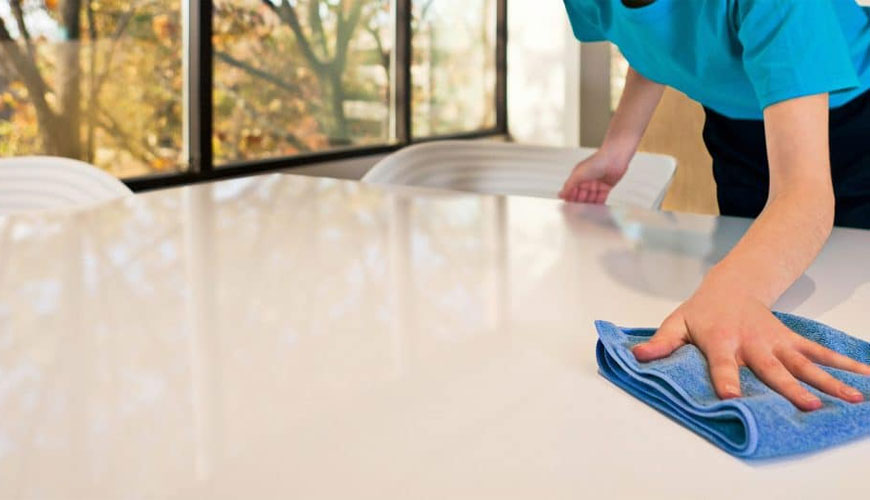

EUROLAB laboratory provides testing and compliance services within the scope of EN ISO 7172 standard. The EN ISO 7172 standard describes methods for determining the stability of any table that is permanently attached to the structure of the building. Test results are valid only for the tested product. Where test results are intended to be applied to other similar articles, the test should represent the production pattern.

In the case of designs not included in the test procedures, the test should be performed as described as far as possible and a list of deviations from the test procedure should be established. Stability is defined as the ability to withstand forces that cause the item to topple.
EN ISO 7172 Test Equipment
A device for applying a vertical force of a specified or increasing value, capable of exerting a vertical force. The device must not impede the movement of the tested object. If a specific value is desired, the device can be stacked, eg. a steel plate. The accuracy of the force will be ± 5%.
The horizontal force application device, for example, the spring gauge, which can apply a gradually increasing horizontal force to a hill. The accuracy of the force will be ± 5%.
The stops should not be higher than 12 mm in cases where the design of the goods requires the use of higher abutments to ensure that the goods will slide but not topple, in which case the lowest part to prevent the goods from slipping will be used.
Extension wings etc. For tables with a spool, perform the test at the least stable edge position possible, at the center of the extension leaf edge. If more than one arrangement of the extension wing is possible, the least stable one should be chosen.
Tables with non-rectangular tops, tables with pedestal-type supports, etc. Follow the same procedure in principle for However, the least stable edge position for vertical force and horizontal force will be found by trial and error. Test tables with and without these extra leaves and with extra leaves in all different positions.
Stability with Vertical Force
Place the table on the floor with the legs resting along one long side of the table. Tighten any mounts. Apply a vertical force to the center of the tabletop along the long edge placed against the stops, with the center of gravity 50mm from the outside edge of the tabletop.
Increase the power to any specified value or until at least one of the feet on the opposite side of the table is off the ground. Record the force in Newtons to the nearest integer. Repeat this test with the legs against the bolsters along one short side of the table and the vertical force in the middle of that short side.
Stability with Vertical and Horizontal Forces
Apply a vertical force along the edge. Apply a horizontal force outward from the center of the long edge using a strip (for example) placed between the tabletop and the vertical force application device. Increase the horizontal force until at least one of the legs on the other side of the table is off the ground. Record the force in Newtons to the nearest integer. Repeat this test with the legs against the struts along one short side of the table and vertical force and horizontal force in the middle of that short side.
EUROLAB, with its more than 25 years of experience, state-of-the-art accredited laboratories and expert team, helps you get precise and fast results.
To get an appointment, to get more detailed information or to request an evaluation, you can ask us to fill in our form and reach you.